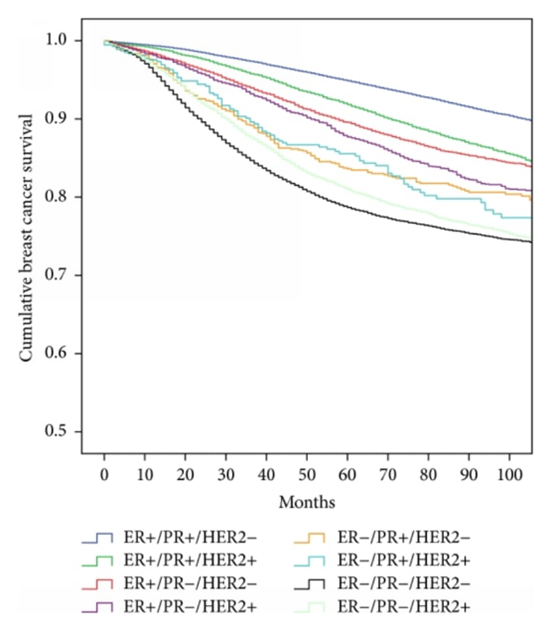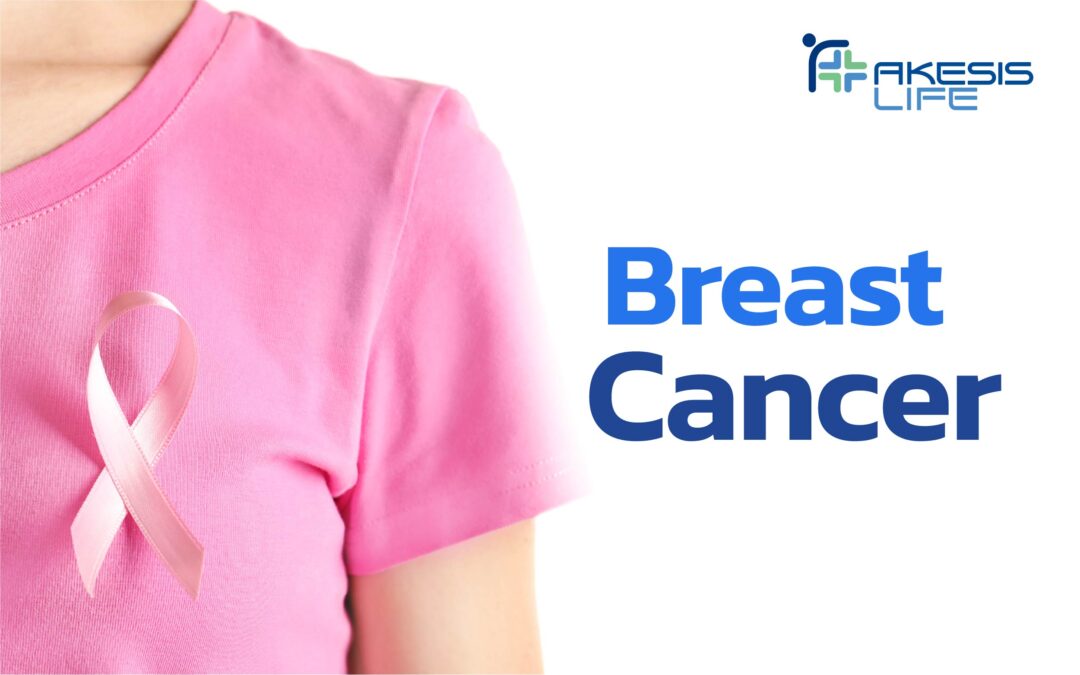According to the 2020 report by the World Cancer Research Fund International, breast cancer is the most commonly diagnosed cancer worldwide. In Thailand, the Department of Medical Services reports that breast cancer is the leading cancer among Thai women, and ranks third overall (after liver and lung cancers). It also remains the top cause of cancer-related deaths in women.

Causes and Diagnosis
Breast cancer arises from the mutation and abnormal proliferation of ductal or lobular epithelial cells—that is, from cells of the milk ducts or milk-producing lobules. Diagnosis typically involves triple assessment:
- Clinical breast examination
- Imaging studies (Ultrasound, Mammogram)
- Pathological evaluation of a biopsy specimen
Risk Factors
- Use of oral contraceptives
- Family history of breast cancer
- Genetic mutations (e.g., BRCA1, BRCA2, p53)
- Early menarche (before age 12) or late menopause (after age 55)
- Nulliparity or having the first child after age 30
- Exposure to endocrine-disrupting compounds (EDCs) such as:
- Bisphenol A (BPA)
- Phthalates
- Diethylstilbestrol (DES)
- Cadmium

Screening and Early Detection
Breast cancer screening can begin with breast self-examination, clinical exams, ultrasound, or mammography every 1–2 years starting at age 35. High-risk individuals should consider starting screening 5–10 years earlier than the general population.
Staging and Treatment Approaches
Staging of breast cancer is typically based on the TNM system (Tumor size, Node involvement, Metastasis) and follows guidelines from the National Comprehensive Cancer Network (NCCN). Treatment is personalized based on tumor size, location, lymph node involvement, metastasis, and hormone receptor status (ER, PR, HER2).

Primary Treatment Options
- Surgery
- Wide excision (lump removal)
- Breast-conserving surgery
- Modified radical mastectomy
- Optionally followed by breast reconstruction
- Often includes lymph node dissection
- Chemotherapy
- Hormonal therapy
- Radiotherapy
- Targeted therapy, such as Trastuzumab for HER2-positive tumors
Prognostic Factors
Breast cancer prognosis depends on:
- TNM stage
- Histologic grade and subtype
- Hormone receptor status (ER, PR)
- HER2 protein expression
- Immunohistochemistry (IHC)-based biomarkers
Tumors that are early-stage, low-grade, and ER/PR/HER2-positive are associated with better outcomes and higher survival rates.

Reference: The Influence of Socioeconomic Status on Racial/Ethnic Disparities among the ER/PR/HER2 Breast Cancer Subtypes. Journal of Cancer Epidemiology. 2015.
Treatment Side Effects
- Lymphedema (arm swelling) due to lymph node dissection or radiation
- Chemotherapy may cause nausea, vomiting, gastrointestinal disturbances, neuropathy, hair loss, cardiotoxicity, and bone marrow suppression—leading to higher infection risk
- Targeted therapy (Trastuzumab) may cause muscle pain, headache, and decreased cardiac function

The Role of Integrative Medicine in Breast Cancer
Integrative oncology combines conventional treatments with complementary therapies to address all aspects of cancer. This includes:
- Nutritional therapy
- Enzyme therapy
- Ozone therapy
- Immunotherapy and cell therapy
These therapies aim to:
- Enhance treatment response
- Reduce side effects
- Repair damaged tissues
- Prevent recurrence by:
- Addressing the root causes of cancer
- Modifying the tumor microenvironment (TME)
- Strengthening immune function
Examples of integrative therapies:
- Liver and gut detoxification
- Anti-inflammatory support
- Hormonal balancing
- Lymphatic drainage therapy
- Intravenous nutritional supplementation
- Repurposed medications (drugs used for other conditions that have anticancer effects)
********************************************************************************


